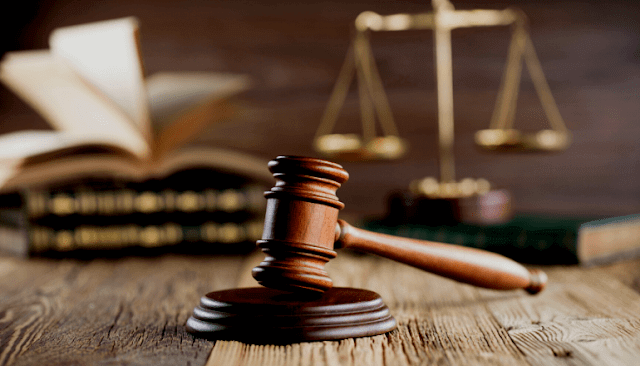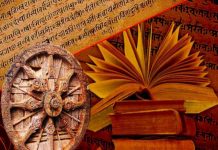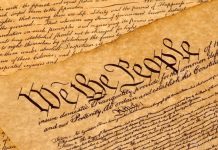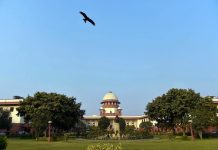This article is written by Daksh Ghai, from Symbiosis Law School, Noida. The article provides a brief overview of the importance of dissenting judgements in a democracy and discusses the decreasing trend of dissenting judgements in the recent past.
Table of Contents
What are dissenting judgments?
Judges in higher courts of appeals can differ on their perceptions of facts and law when resolving a case. Such dissents are conveyed in distinct judgements, and in constitutional disputes, they demonstrate the democratic and diverse nature of the judicial process strongly. Dissenting judgments, in basic terms, are the judgements made by one or more judges of a particular court who disagree with the majority opinion and so convey their opinions on the case, which differ from the majority opinion of the bench. Furthermore, by publishing such dissent, the writer can define his or her position on the subject and the necessity for a distinct viewpoint. Dissent plays a crucial part in judicial decision-making and has the potential to have a significant impact on legal progress. As a result, it’s critical to examine the function of dissenting judgements in legal decision-making.
Dissenting judgments in a democracy – keeping the principle tight
The Right to Freedom of Speech and Expression is guaranteed by the Indian Constitution to every citizen, and this freedom includes the ability to openly express one’s ideas, opinions, and thoughts through speech or text. This right also involves the ability to think and organize one’s thoughts; the ability to be unaffected by outside influences and to have a wholly independent viewpoint. This necessitates a discussion of the importance of the right to freedom of speech and expression, as well as dissenting judgements, as a benchmark of democracy, as envisaged in the Indian Constitution’s Preamble.
There can exist no democracy without dissent, according to Judge Brennan, who sees dissent as necessary democratic protection and legal uncertainty as a sign of a healthy society. We must not continuously favour any particular policies or ideals to tie the hands of those who come after us, according to the constitutional principles. Solutions must be found for specific disagreements and in the search for consensus within a certain cultural context, but the possibility of change must be preserved. As a result, the law must have systems for signalling and controlling disagreement without causing it to erupt.
The majority view of the judges is to be considered under Article 145(5) of the Indian Constitution; however, judges are free to write their own dissenting opinions if they believe the majority judgement is inconsistent or requires a different approach than that of the majority. This provides judges with the “mental independence” to think and comment in a way that they believe is rational. The significance of recognising dissenting viewpoints is closely related to judicial independence and democracy in its purest form. So long as dissent takes a back seat in a democracy, it is merely a theoretical democracy. When dissenters are denied a voice, the democratic rule fails (in practice), resulting in the adoption of the authoritarian viewpoint and finally mobocracy. The significance of dissenting judgements arises from the fact that this power allows judges to make non-partisan decisions, instilling a progressive mindset in the process. Only by recognising such dissent is it possible for law and society to evolve. The idea that dissent and democracy are two sides of the same coin isn’t altogether incorrect. Dissenting opinions contribute to the formation of the law by eliminating unnecessary sections and revising those that need to be changed. Not only does repressing dissenters harm the dissenters, but it also harms democratic practice. In a democracy, dissent must not be silenced.
Importance of dissenting judgments
- Knowing that dissent would be published makes it more likely that all members of the panel will be treated as equals and that no viewpoint will be silenced. As a result, rather than weakening collegiality, dissent strengthens it in this regard.
- Publication of the dissent helps to refine the reasoning of the majority, ensuring that decisions are fully considered and independent and that individual decision-makers are held responsible in the sense that they are seen to carry the responsibility of judgement rather than taking the easy way out and following others.
- A dissent may reveal flaws in the law, allowing today’s dissent to become the majority or be adopted by the legislature tomorrow. In the case of Plessy vs. Ferguson, the issue was whether there should be separate compartments for white persons and persons of coloured races in trains. The use of a compartment meant for another race could entail the imposition of a fine or punishment. The majority upheld this policy of segregation. Justice John Marshall Harlan was the lone dissenter and argued that there should be no discrimination and all citizens are equal before the law. This view of Justice Marshall was later upheld in Brown vs. Board of Education by a unanimous 9–0 verdict.
- The printing of dissent embodies the freedom of expression and speech. Dissent and disagreement must be allowed, and even encouraged, if a society is to grow holistically, protecting not only the economic but also the civil rights of its citizens.
Landmark dissents in Indian legal history
The following are the three most forceful dissents in Indian legal history:
First, in the well-known case of A.K. Gopalan v. The State of Madras, in which the Preventive Detention Act IV of 1950 was challenged, Justice Saiyid Fazl Ali defied his fellow justices and delivered a strong exposition. He said that the constitution’s essential rights do not operate as separate rules, but rather must be viewed collectively because they overlap. Interpretation of fundamental rights is now widely accepted, but at the time, his exposition was merely dissent from the majority.
The case of Kharak Singh v. State of Uttar Pradesh was concerned with police monitoring and domiciliary visits. Justice Subba Rao wrote in his dissenting opinion: “It is true that our constitution does not directly identify a right to privacy as a fundamental right, but the claimed right is an essential part of personal liberty,”. Only in 2017 did the Supreme Court, in the landmark case of K.S. Puttaswamy and Ors. v. UOI and Ors., strike down the Kharak Singh decision and rule that the right to privacy is a fundamental right under the Indian constitution, confirming what Justice Subba Rao had said in his dissenting opinion in the Kharak Singh case.
Let’s look at the third dissent in the Indian judicial system’s history. In ADM Jabalpur v. Shivkant Shukla, Justice H.R. Khanna disagreed with the majority judges, who decided to hold that the right to approach the court for the enforcement of fundamental rights was suspended during the emergency and that there would be no locus standi (standing before the court) to report a writ of habeas corpus or any other writ.
The decreasing trend of dissenting judgments in the recent past
Dissenting viewpoints have their origins primarily in common law countries. As a result, common law countries began publishing opposing views to improve court administration. Many opposing opinions were issued shortly after the Supreme Court was established in 1950, with the biggest number happening between 1960 and 1970. However, in the third decade of its existence, there was a decrease of dissenting views, particularly in matters involving executive action disapproval and constitutional rights restrictions.
Of course, the certainty of outcome in a specific case is a very significant, if not absolute goal that is achieved through majority voting criteria and the notion of res judicata. However, there is no reason to believe that a majority is more likely to be correct than a minority. The reason for majority decision-making is that it is a tool for achieving certainty of conclusion in a specific circumstance that, unlike requiring unanimity, promotes equality of respect for all participants.
Reasons that may have contributed to a decrease in the number of dissenting judgments
Establishment of a Two-Judge Bench
The Supreme Court does not holden banc hearings on the cases it hears. Instead, it sits in a variety of benches, as determined by the Chief Justice of the United States, depending on the legal issue at hand. Dissent is technically impossible in a two-judge bench since one judge’s judgement cannot be considered superior to the other’s. However, a concern emerges in this situation: what happens if the two judges disagree? Dissent is a disagreement between two judges, however, such dissent is rarely encountered in cases for the reasons stated herein. When the two judges cannot agree, the CJI refers the case to a larger bench for further consideration. As a result of the disagreement, the judiciary is burdened since the matter must be reconsidered, causing a reasonable delay in the case’s final disposition.
Seniority’s Influence on Dissent
Regardless of the number of judges on a bench, the senior-most judge always has the upper hand in swaying the decision. Sixty-six percent of dissenting opinions in constitutional bench matters came from the two junior-most justices between 1993 and 2016. As a judge’s seniority on the bench decreases, the number of dissenting opinions increases. When a junior judge creates an opinion and delivers it to the bench, it is likely that his judgement will not be able to overrule the senior judge’s opinion. As a result, the judgement of the senior-most judge takes precedence, and a junior judge, fearful of losing support from other justices on the bench, complies with the senior judge’s position.
The Chief Justice’s Influence
As previously indicated, the presence of the Chief Justice on a bench has resulted in lesser dissent. The rate of disagreement in the presence of the CJI, on the other hand, has been falling since independence. When the CJI was on the bench in the first two decades after independence, the rate of dissent was roughly 10 percent. Over the next two decades, the rate of dissent fell even lower, to below 4%. Between 2001 and 2010, the rate of dissent fell even lower, to under 3%. Furthermore, between 2011 and 2014, there was not a single dissenting voice.
Recent Dissents
The government had certified the Aadhaar Bill as a money bill, allowing it to be passed without a majority vote in the Rajya Sabha. In a 4:1 decision, a five-judge bench led by then-Chief Justice Dipak Misra maintained the Aadhaar Act. The majority view expressed through Justice Sikri’s opinion indicated that there was nothing wrong with presenting and pushing the Aadhaar Act through Parliament as a money bill, whereas Justice Chandrachud’s dissent begins with the legislative process that kicked off the Aadhaar Act, 2016. Chandrachud has called it a “fraud on the Constitution”. In his dissenting opinion, Justice Chandrachud said the Aadhaar ruling addressed two important questions: (1) Whether the Speaker’s decision to certify a bill as a “Money Bill” under Article 110(1) is final and binding, and (2) Whether such decision could be challenged in court; and, if yes, whether the Aadhaar (Targeted Delivery of Financial and Other Subsidies, Benefits, and Services) Act, 2016 (the Aadhaar Act) was correctly certified as a ‘Money Bill’.” He further claimed that the Aadhaar initiative infringes on fundamental rights such as the right to privacy and equality.
Conclusion
To sum up, dissenting thoughts are the backbone of any democracy, and repressing a dissenter would only cause chaos in society. ‘It is impossible that bodies of men should always be brought to think alike: there is often a degree of coercion and the majority is governed by the minority and vice versa according to the strengths of opinions and interests,’ said Chief Justice Eyre in the case of Grindley v Barker. Dissent has no bearing on the result of a case, but the consequences can sometimes be more far-reaching than the dissenting judge could have imagined. A dissenting opinion may prompt a challenge to the existing jurisprudence on a topic, and therefore, lead to the emergence of a more progressive one.
References
- https://www.barandbench.com/columns/contribution-of-dissenting-opinions-in-constitutional-law-cases
- https://watermark.silverchair.com/3-1-101.pdf?token=AQECAHi208BE49Ooan9kkhW_Ercy7Dm3ZL_9Cf3qfKAc485ysgAAArwwggK4BgkqhkiG9w0BBwagggKpMIICpQIBADCCAp4GCSqGSIb3DQEHATAeBglghkgBZQMEAS4wEQQMyESHnTZIUNhQ8SXdAgEQgIICb5iXJ-TzY0YJuXH4YDqeNBAaMDfbTT_rzdG2e_BpZP83soohiu5KxbQhF5SdZ6WpAHzyAaDN7bP5X5TnnVFUg3rnqd2jjbHMN2azWzNNXPDKmLAqoGJDhgbjP9vUz-AVuVtJkAN_9LJUTxaZbwxwtne7DcZqJZfMJDPJJEda0RLeVyz56cCFJBFKDcF5AHeV-hBXhL1LEqwK5n-rRwn0rIPGtUfuuBi7pl3oCkw_gAJ8nczlKYPH-YZvgyOoFSfEDP5aZINj5ZrtV-7KwM-LqMDbk-q2IaFVo91wg1kzBF4DExUDCqVqhX48F_mLW_gZ0vth3Mx8x4EpYIsCefwq4HHh_kffFIORiCFiPirwe49OUHx3jHOe9QH3P7msuFP5ZBqVgFzMD2M_-EO7aZi6F1KnBFgDqn-QsRcaUSNM9bUqSasmvYGysNHCHxyBkAhECA-mR0Kd0VQ9gg8-WwmYj2Ma-k7IUQXlRplYrz2u-OAgFVuPIJo3nnzmrCn4qibaVQ60wk5cDl_BhIZxkUbXngZbA4p0GrCnq1b1JcVDA-CAxl7M9sKf_Tf57P_AaxEfRgHC89osyci6fIzHYPB2MT-BuJPEwfO4XaAyXju0CP9Rv7mX_k-Zql_ukI39U_cckkXQymWK_ldfwbnnGG8nvKK7-d7drIsLlQsT_bOS9EAPNl46Ce3PlojtUYBpsYECa4YZBeQITVGBPa6dHOlheDV4PK1KqvX2ZUEYdvoDhsWYrEEE1zSJ5bLfEWrcpENEc-nbxzY_q_g2OKvpAGSvWV8EkfFHU9r25X8OvSV2CU8FegZVey33T0GgPpytl2Hc
LawSikho has created a telegram group for exchanging legal knowledge, referrals, and various opportunities. You can click on this link and join:
 Serato DJ Crack 2025Serato DJ PRO Crack
Serato DJ Crack 2025Serato DJ PRO Crack











 Allow notifications
Allow notifications


